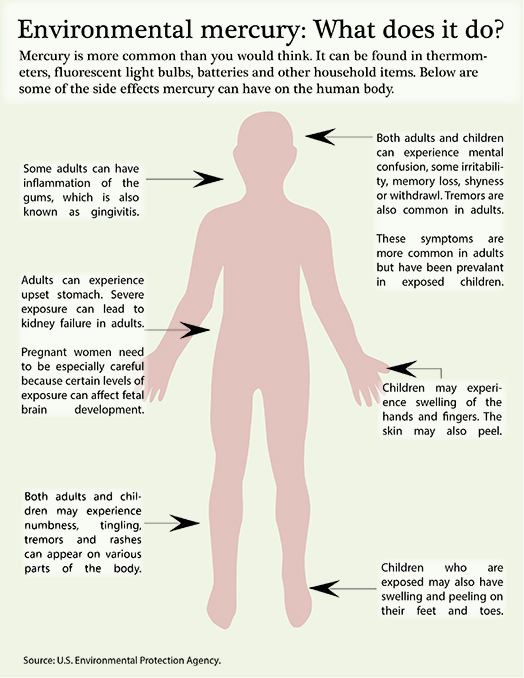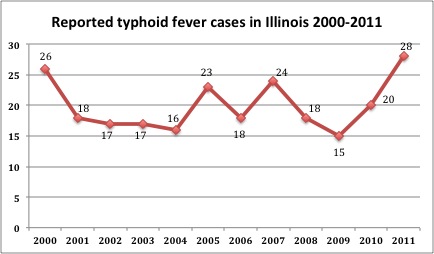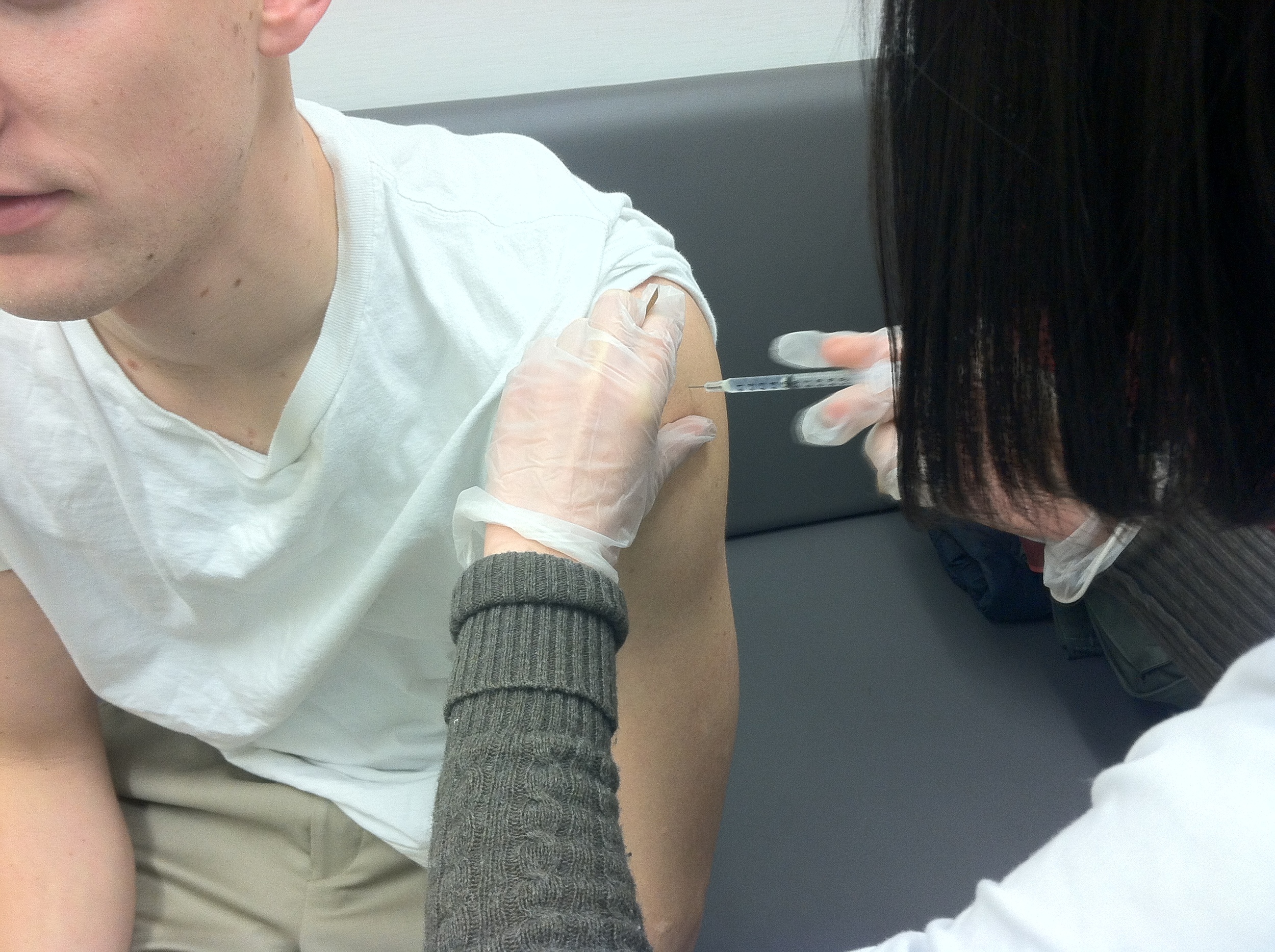Journalists from Medill Reports visited seven different botanicas in Pilsen, Humboldt Park and Logan Square looking for mercury. They were met with some resistance, and none of the botanica owners and employees said they had mercury for sale. Botanicas typically serve members of the close-knit Hispanic communities in those areas and are wary of outsiders. Samantha Andreacchi and Erica Tempesta contributed to this report. To see the full version click here.

CHICAGO — When Arnold Wendroff asked his special education ninth grade chemistry class in June 1989 in Brooklyn, N.Y. “What is mercury used for?” he didn’t get the answer he was expecting.
“I asked…thinking someone would likely know a thermometer,” he said. “And a Puerto Rican boy named Jamie raised his hand, and instead of saying a thermometer he said, ‘My mother uses it in Santeria.’”
Santeria is a magico-religious practice that originated in Cuba. It combines the magical practices of the Yoruba people from Africa with some of the traditions of the Roman Catholic Church.
The religion is particularly popular in Latin American and Caribbean countries, including Cuba, Puerto Rico, Mexico, Venezuela, Colombia and the Dominican Republic, and it has also spread into the U.S.
An exact number of Santeria practitioners in the U.S. is nearly impossible to calculate, said Migene Gonzalez-Whippler in his bookSanteria: The Religion. People who practice Santeria often keep their faith hidden because of the stigma behind the religion, which is typically associated with animal sacrifice, black magic and spiritual possession, where a spirit physically takes over a person’s body.
The young boy said his mother sprinkled mercury on their floors to keep away “brujos,” or witches, and she bought the mercury at a botanica in Brooklyn, said Wendroff, who has since dedicated his life to educating the public, especially ethnic communities, on the real dangers of the ritualistic use of mercury.
To see if this was true, he asked Jaime to buy him some mercury the next time Jaime’s mother went to the botanica, and sure enough, he did.
“I paid him a dollar and he gave me a colorless gelatin capsule about half full of what was obviously mercury, a total gross weight of 7.2 grams,” Wendroff said.
Mercury is a naturally occurring element found in air, water and soil, but it is also a neurotoxin that can cause various health problems, including psychological and physical symptoms, for someone who is exposed to it. (For more information on the health effects of mercury exposure, see the infographic to the right.)
There are three types of mercury: organic mercury that is typically found in fish, inorganic mercury, or mercury salt, and elemental mercury.
Elemental mercury is the most common form and is the only metal that is liquid at room temperature. It is found in common items and products, such as certain batteries, antique clocks, mirrors and thermometers, and energy-saving compact fluorescent light bulbs and other fluorescent bulbs.
Mercury capsules, similar to the ones Wendroff described, were once available and may still be available right here in Chicago, said Esther Sciammarella, executive director of the Chicago Hispanic Health Coalition.
The Chicago Hispanic Health Coalition, established in 1991, is an organization that promotes healthy living in Chicago’s Hispanic community to help prevent chronic disease and health disparities in the ethnic group.

“You can go to a Santeria shop and ask for a container of mercury,” Sciammarella said. “Go to a botanica and ask for ‘azogue.’” Azogue is a Spanish word for quicksilver or mercury.
Botanicas are Hispanic alternative medicine shops, typically filled with herbs, perfumes, natural remedies, oils, sprays, religious candles and other magical paraphernalia. And there are over 20 botanicas in Chicago, most of which are in communities where the Hispanic population is prevalent, including Pilsen, Logan Square and Humboldt Park.
Sciammarella worked with the Chicago Department of Public Health’s Office of Hispanic Affairs in 2000 on a study that addressed the use of mercury in the city’s Hispanic community.
The study found that Hispanics in Chicago use mercury for religious purposes and as a form of folk medicine. The study also found that “the mercury was available through natural goods stores called botanicas, mystics and curanderos” which "claimed that mercury serves to cure ailments, provide spiritual benefits, and/or solve domestic issues.”
But Richard Gelb, who has been a santero — or Santeria priest — since 1990, has never heard of mercury being used in Santeria rituals. Gelb, 62, is the assistant principal and an English teacher at Benito Juarez Community Academy in Pilsen.
Still, Dr. Daniel Hryhorczuk, director of environmental health at the center for global health at the University of Illinois College of Medicine, conducted a study on the topic in 2000 with the Illinois Department of Public Health, and his research yielded similar results as Sciammarella’s, showing the city’s Hispanic community used mercury.
“It is not limited to one Hispanic community; there are actually several different communities that use mercury in either cultural or religions practices and also several different religions—it’s not just one religion,” he said.
Hryhorczuk said mercury use in the study was primarily tied to Santeria, though he heard it is also used in voodoo. He found that outside of religious practices, members of certain communities were also using mercury to treat ‘empacho,' which is a Hispanic folk illness typically characterized by symptoms such as indigestion, constipation, diarrhea, vomiting or lack of appetite.
“It was also being used by some members of communities...who believed that injecting yourself with mercury would make you stronger,” he said. "And that was one of the most dangerous practices that we encountered in our clinical practice."
Dr. Estella Hernandez confirmed that some Hispanics in Pilsen, the largest Hispanic community in Chicago, buy mercury from local botanicas. She is a doctor of family and bariatric medicine at NutriMedicos, a physician-guided diet and weight management clinic in Pilsen.
Hernandez said she has seen a few patients who have told her they ingest mercury for medicinal purposes.
“One of the conditions they use it for is empacho,” she said, confirming what Hryhorczuk found during his Chicago study. “But it’s not something that’s scientifically and medically based.”
And when patients tell her they’ve taken the metal for health purposes, Hernandez said she warns them about the dangerous health effects of mercury, as she does with any other treatment or practice that may cause them harm.
Sherrie Elzinga, assistant to the director of the Illinois Environmental Protection Agency, said that the Illinois EPA is also aware that people use mercury for religious purposes, particularly in the Hispanic population.
She noted it’s not illegal to possess the toxic metal, “but we don’t suggest that you possess it, and we suggest you dispose of it properly.”
The U.S. Consumer Product Safety Commission allows the sale of mercury as long as the product is properly labeled as “Not Recommended for Household Use.”
Elzinga said the Illinois EPA does not have an initiative at this time to address the ritualistic use of mercury in Chicago’s Hispanic communities.
Even though mercury use has been known to be prevalent within certain communities in Chicago, both Sciammarella and Hryhorczuk experienced community resistance during their respective studies.
The study done by Sciammarella and the Chicago Department of Public Health ended up focusing on education and resulted in the creation of informational brochures. These brochures were printed in Spanish and handed out within the community.
And the study that Hryhorczuk and the Illinois Department of Public Health intended to do was never completed.
“We started to get some pushback from the community,” he said. “They felt that this was intrusive because mercury was being used in some of their religious practices, and they felt that this was an intrusion on their religious freedom.”
Hryhorczuk said to successfully complete an in-depth survey about mercury use in the Hispanic community, “you would need to be either an anthropologist or ethnographer who builds trust with the community, who can speak the language and who can go in there and actually work with members of the community.
“To have outside researchers, like university scientists, come in and do this is very difficult”.
Even a little bit of mercury exposure can be dangerous, and most people are not always aware that they have been exposed. This is typically because mercury is not just used in traditional and religious practices—it’s still found in common items and products.
When mercury is exposed to air it, immediately starts giving off fumes that can be inhaled, and it will continue to evaporate as long as the little metal balls are in the atmosphere, environment, or room, said Dr. Susan Buchanan, director of the University of Illinois at Chicago’s Great Lakes Center for Children’s Environmental Health.
According to Melaney Arnold, communications director at the Illinois Department of Public Health, the main way people are exposed to the toxic metal is by inhaling invisible fumes, allowing it to be absorbed by the lungs.
However, there are other ways people can be exposed.
“Mercury can enter the body through the skin, especially if it contacts a cut or wound,” Arnold said. “If you swallow mercury, very little is absorbed. Most of the mercury is eliminated through the digestive tract.”
Buchanan described dramatic symptoms associated with severe poisonings including upset stomach, mental confusion, irritability, memory loss, tremors, numbness, tingling and skin peeling.
But mercury exposure and poisoning severely affects children, Buchanan said.
“We are concerned about mercury exposure in children because the brains are still developing at least through age 6 and probably longer,” she said.
If children have been exposed to elemental mercury, they will typically have a combination of a toxic reaction with an allergic reaction, Hryhorczuk said.
“We can see this illness called acrodynia, or pink disease, and that manifests itself as rashes over the body which looks like an allergic reaction,” he said.
For adults, mercury exposure is more detrimental to the central nervous system, Hryhorczuk said.
According to Buchanan, you should never throw away or vacuum mercury because it can disperse the particles throughout a large area. She suggested using two pieces of paper to roll the metal balls off the floor and into an envelope.
But she said the best option is to call a local health department to take care of it. In addition to the health departments, there are free programs that help to safely dispose of mercury-containing items, including the Illinois EPA’s Household Hazardous Waste Collection Program.
“It’s not going anywhere,” Buchanan said. “So as long as it’s around, it is going to give off those mercury fumes.”
The highest concentration of botanicas are in Pilsen, Logan Square, Humboldt Park and South Lawndale. Pilsen is the largest Hispanic community in Chicago.
To follow Lauryn on Twitter click here.
To connect with Lauryn on LinkedIn click here.


















